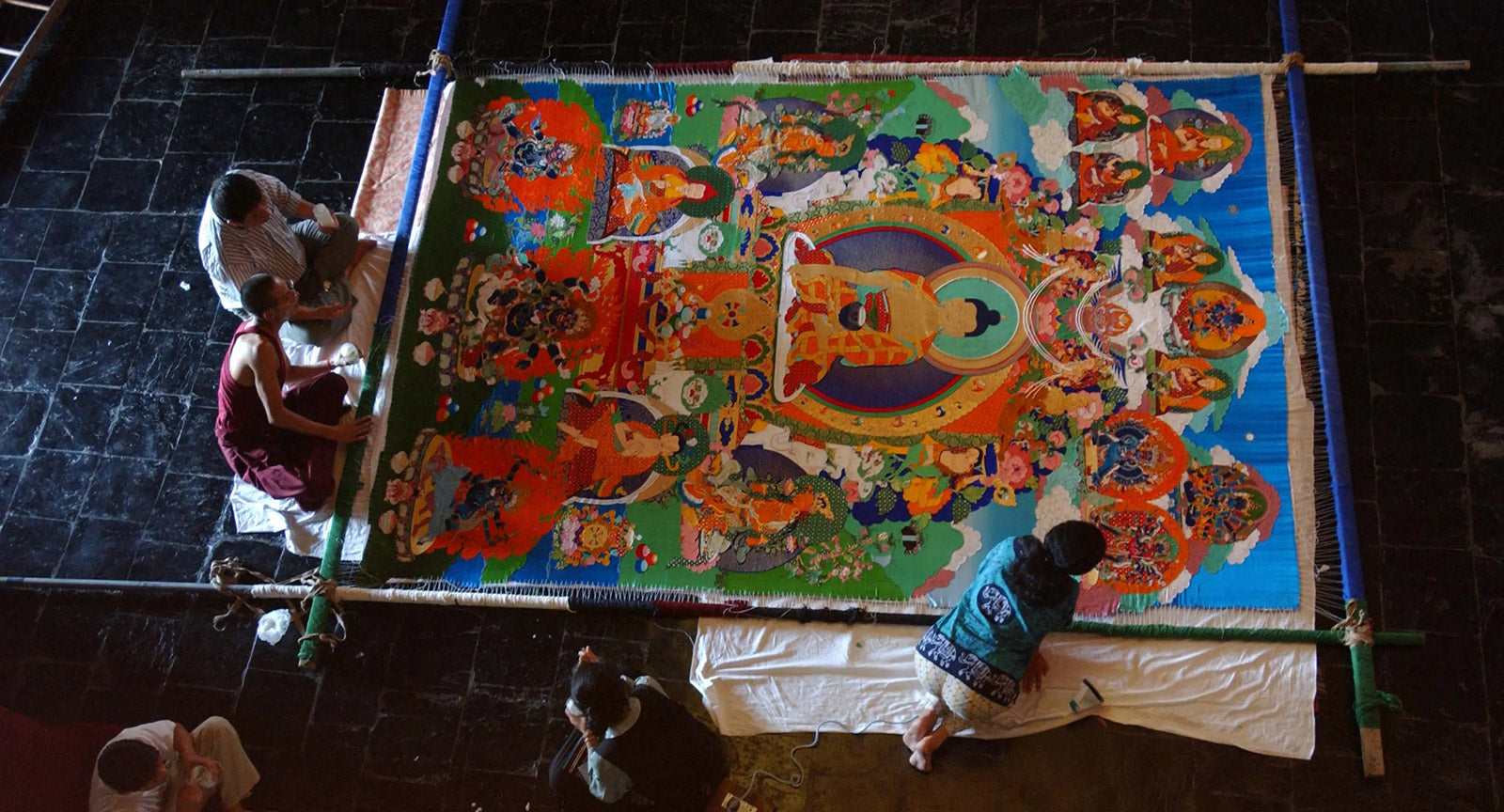Thangka Appliqué
Thangka appliqué is a technique of creating thangkas using not paint but precious silk. Just like thangka paintings, thangka applique is a sacred art, and appliqués follow the iconography for Buddhist deities as laid down in Buddhist scripture. The art of appliqué began among the Huns of Central Asia to embroider saddle blankets. Gradually, it spread east across the Silk Road and was adopted by Tibetans as a religious art.
Some appliqued thangkas, called kyigus, can be many stories high. The largest, which hangs down the face of the Potala, can be over one hundred feet in length. Traditionally, these are only brought out on special religious occasions, and the rest of the year, they are kept safely stored away. These thangkas are considered great treasures and are so well cared for that silk thangkas dated back to the 13th century still exist within living memory.
A completed thangka comprises hundreds, if not thousands, of individually embroidered pieces, each outlined by a border of horsehair wrapped in silk thread. This type of embroidery, called couching, is different from other methods in that the design is not embroidered directly onto the fabric, but rather, the cord of horsehair and silk is "couched" over the fabric to create the design. Once finished, the pieces are assembled and hand-sewn onto a base to form the design. This layering technique creates an extremely durable piece, while the horsehair gives the thangka strength and allows it to adjust to different environments without losing shape. A completed thangka is the product of many months of work and the care of many artists.


In the traditional practice of thangka applique, the most skilled tailors played a crucial role. They were provided with the layout of the thangkas by thangka artists, who sketched the design using the correct proportions for each deity, as specified by Buddhist scripture. The tailors, although not well-versed in Buddhist iconography, were adept at stitching and could use the sketch as a blueprint to create the thangka. This collaborative process between the tailors and artists was instrumental in producing a complete and intricate thangka.
Norbulingka’s thangka painting master Temba Chophël, who briefly studied under the 13th Dalai Lama’s master tailor, was skilled in both sewing and painting. He had the innovative idea to combine knowledge of iconography with stitching knowledge, thus creating a new tradition of specialized thangka appliqué artists here at our Institute.
The largest thangka the Norbulingka team has created is 14ft high and currently hangs in our temple, the Deden Tsuklagkhang. It is a must-see for any visitor to the Institute.

WORKSHOPS


For those who wish to learn the art of appliqué, Norbulingka offers workshops ranging from one day to several months. Courses are designed based on the time and interest of individuals and groups. They are a great way to learn more about the sophistication of Tibetan culture and students will leave with a beautiful piece of their own.
Our Masters

Tempa Chophel, Late Master

Tsultrim Gyatso, Thangka Applique Master






